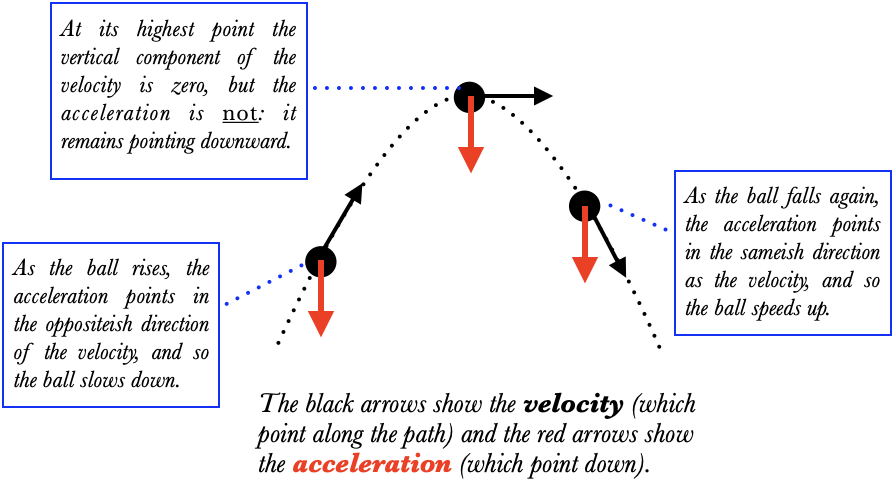10.
Free Fall
An object is in free fall when the only force acting on it is gravity. Technically, this only occurs in a vacuum, because air resistance is always present. In practice, however, we can often ignore air resistance and still get a pretty good idea about how an object behaves, although the speeds we predict may be too high.The net force on an object in free fall is $\vec F_{net}=mg\downarrow$, so we know from Newton's Second Law that its acceleration is $$\vec a={\vec F_{net}\over m}={mg\downarrow\over m}=g\downarrow$$ where $g$ is our old friend $9.8\u{m/s^2}$.
Although it is called free fall, the term applies to any object which is only experiencing the force of gravity—that is, any object not in contact with anything. When I throw a ball into the air, that ball is in free fall the entire time it is in the air: when it goes up, at the top of its flight, and when it comes back down: the acceleration of the ball is downward during its entire flight. This downward acceleration has a different effect at different points in the flight:
